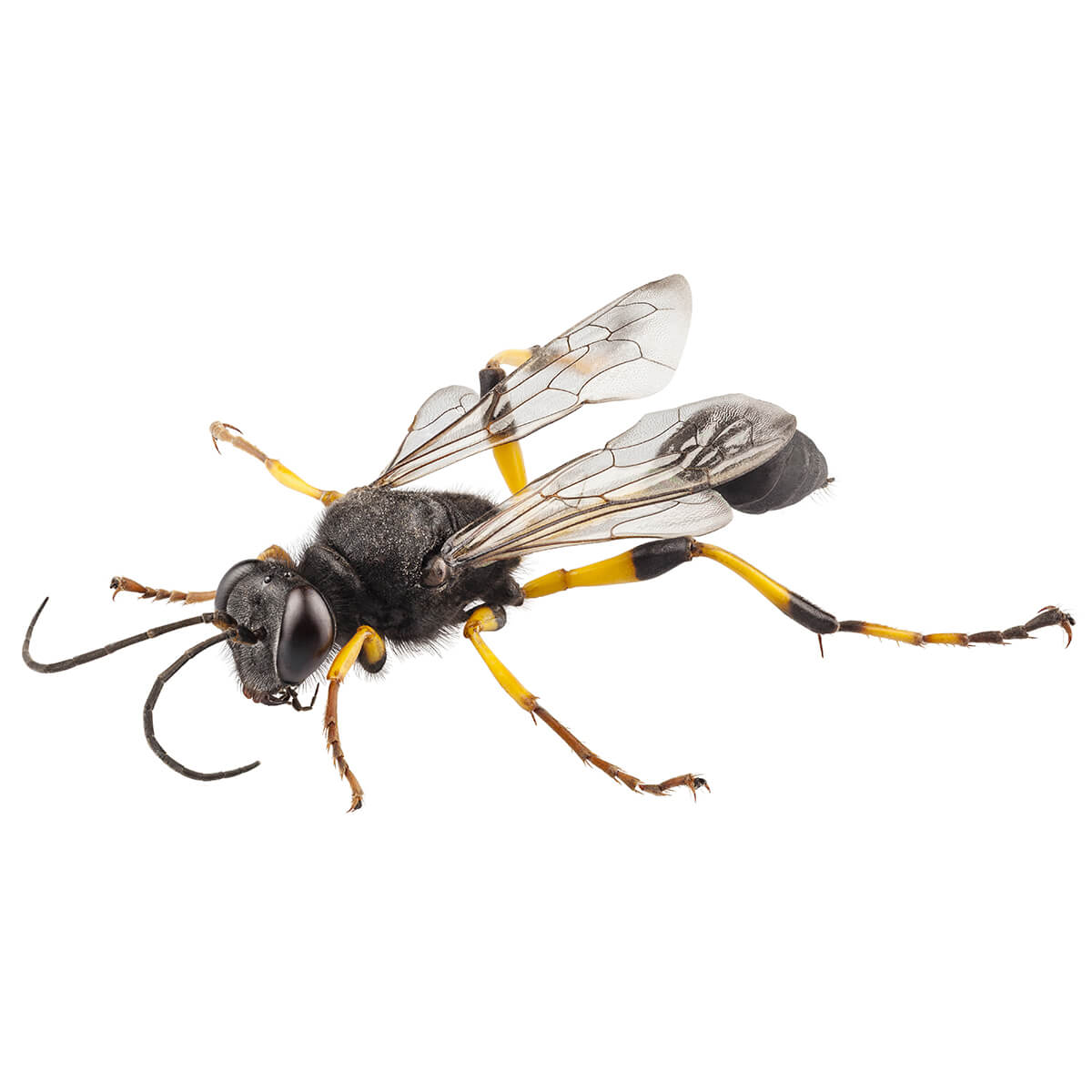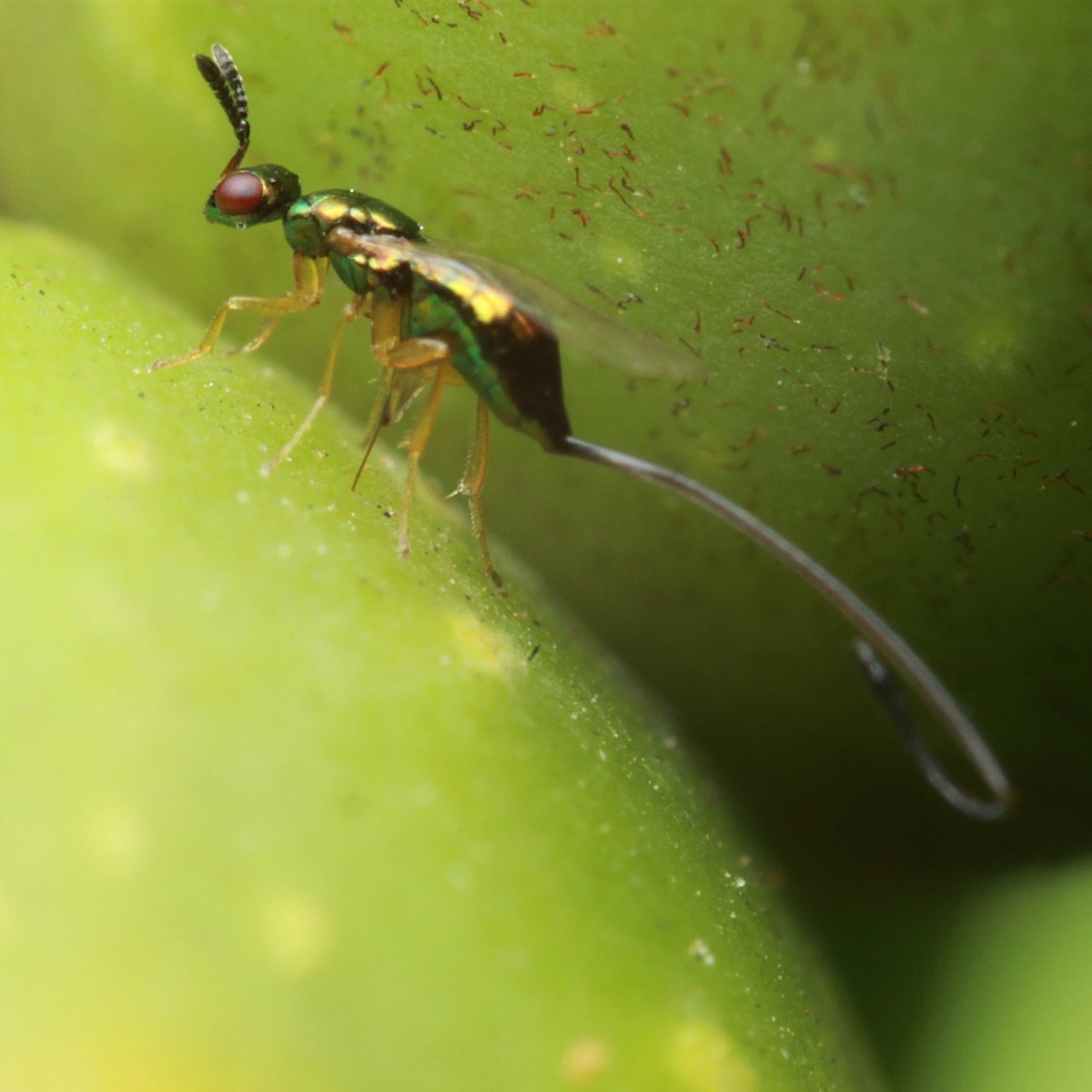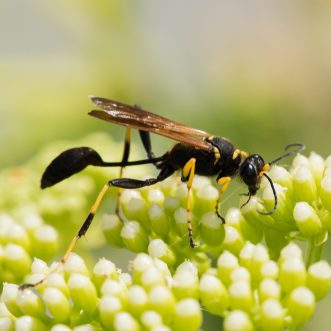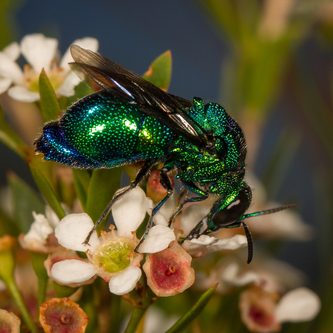Wasps in Australia

Wasps are bees’ more aggressive, territorial, meaner cousins. They are capable of multiple stings and don't hold back when push comes to shove. A wasp would have no problem injecting you with venom multiple times. This can be a real problem since that same venom can be used to paralyse a tarantula. In most cases, you would want them at a safe distance. Wasp control is one of our more popular services, but that doesn’t mean wasps don’t have their place in the world.
There are more than 10,000 native Australian wasps. They are not as good at pollination as their hard-working kin, yet they still hold a crucial role in the Australian ecosystem. Wasps perform natural pest control services. They keep in check many different bugs that may otherwise be harmful to your garden. They also help with the reproduction of figs (which they live and die inside of). Finally, some species often scavenge for dead insects, paper, small debris, and that may cause them to come at odds with us. And no one wants to have their tool shed, garage, or attic infested by small, angry-looking, buzzing, aggressive insects.
They are a lot more nuanced than bees, ranging from relatively docile to absolute nightmares!
Species of native Australian wasps
Types of wasps
- Solitary wasps - Just like their cousins, the bees, solitary wasps live independently of one another. Each female creates her own nest and preps it for the hatching of her eggs. This makes them vulnerable to cuckoo wasps. Most native Australian wasp species are solitary.
- Semi-solitary - In order to avoid some of the downsides of being solitary, particular wasp species have evolved to work together. All females are still fertile, but they share the same nest and always have one of them keeping watch.
- Social wasps - Social wasps have a social structure with a queen, workers, and males (drones). The queen is the only one that is fertile, causing the end of the colony if she dies. If you have a wasp infestation, this would be the most likely culprit. The most popular of these are the European wasps. As the name suggests, they are not native to Australia but an introduced species. However, due to their fast reproduction, they started to affect the ecosystem.
What's the difference between wasps and bees?
Many people confuse bees and wasps. This is understandable since they are members of the same order and have many similar properties. However, certain distinctions should help you confirm you're indeed dealing with wasps.
Honey bees live in hives. They use wax as their main building material and produce honey. Wasps live in nests that are mostly built from chewed up tree fibres to make a papery material. You can usually find their nests under eaves, on or in tree trunks, or branches. Be careful while performing the inspection because social wasps are very aggressive. Book a professional inspection if you don't feel like taking the risk.
Read more on: The Difference Between Bees and Wasps
More about wasps
- Wasp stings - Unlike bees, wasps can sting multiple times without dying. Each time, they release venom, which is very painful (some species even have paralytic properties, though grown humans are too large to be paralysed entirely). To top it all off, they also release a pheromone that marks you as a threat. This causes nearby wasps also to spring to attack.
- Wasp diet - Wasps have a relatively diverse diet ranging from nectar and fruit to small insects and even arachnids. In fact, some species paralyse big Huntsman spiders and lay their eggs inside the spider while the creature still lives. As a result, the eggs hatch and larvae begin to feast on the flesh of the unlucky arachnid. It's a very gruesome scene that inspires many horror films.
- Wasp dangers - Wasps are most dangerous if you're allergic. If you have allergies, you can go into anaphylaxis if you get stung. Your airways will close up due to the body's extreme reaction to the venom, and if measures are not taken immediately, the outcome might be lethal. Even if you're not allergic, some species have extremely potent venom. This can cause excruciating pain and even shock. Many wasp species are very aggressive.
Signs of a wasp infestation
If you see wasps buzzing around, this should make you suspicious enough to check for a wasp infestation. European wasps, for example, are notorious for using small holes to get inside of cavities and build their nests there. For the most part, wasps aren’t dangerous unless you’re allergic. Even if you are not allergic, a sting can be quite painful so take care.
You can usually spot a paper wasp nest under eaves, in trees or bushes. Be careful if you decide to investigate. They can be extremely aggressive when defending their nest, and they have a painful sting. Unlike bees, they can sting multiple times. To top it all off, once you get stung, a signal is sent to the rest that you’re a threat, and you will get attacked from multiple sides.
How to identify a wasp nest
The majority of the wasp species we have here in Australia is solitary. This means they don't build big nests, but every female is fertile and builds her own nest, usually abandoned after reproduction. Wasps can build nests from different materials such as wood fibres, resin, or even mud.
When you spot a huge wasp nest, it's definitely a social species. Social species have a single queen that reproduces, and the rest of the wasps in the nest are sterile females and drones (short-lived males whose only purpose in life is to inseminate the queen).
When you have an infestation, it's most likely social wasps - paper or European wasps, more specifically. European wasps are an introduced species to Australia. Their lack of natural predators allows them to multiply quickly at the expense of native Australian species. They are far more aggressive than native wasps.
- Paper wasp nest - It is a very common type of wasp nest you can easily encounter. Paper wasp nests are usually constructed under eaves or in tree branches. You can often see them hanging, with wasps flying around. They feel papery because they’re made out of chewed-up wood fibres and wasp natural secretion (they literally apply spit on it). Australian paper wasp nests aren’t usually all that big.
- Mud-dauber wasp nest - Mud-dauber nests look like small pieces of pottery attached to your wall. They usually inhabit territories close to humans and are easy to identify with their interesting look. You shouldn’t be surprised if you find a mud-dauber wasp nest in your shed.
How to remove a wasp nest
Removing a wasp nest on your own is not an easy job. Depending on the type of nest, you can use different removal methods. You can try killing the nest with wasp venom or with pest powder containing carbaryl. Identify the entrance and exit holes of the nest and seal them. The wasps should be dead in 5-6 days.
If you're allergic to wasp stings, avoid taking down a nest without calling a professional!
How to prevent wasps from nesting on your property
There are things you can do to prevent wasps from nesting in your home and garden. Inspect your house for holes and cracks, and they can be the perfect place for a wasp nest. Don't leave holes in the garden, and make sure to keep the garbage cans in check. Most of the wasp species are attracted to different types of food, mainly sweets.
Wasps are usually attracted to fruit and sweet things. You can do nothing to prevent them if you have an orchard or even fruit trees in your garden. However, you can keep them away from your home by not leaving food lying around and taking out the rubbish regularly.
What to do in case of a wasp infestation?
The best course of action would be to seek professional pest control help. You can handle a smaller nest on your own, but it's not without risks involved. If you're allergic, the risks are huge. Even if you're not, being attacked by multiple flying venom injections is not the most pleasant feeling in the world.




